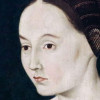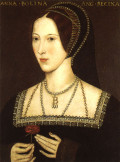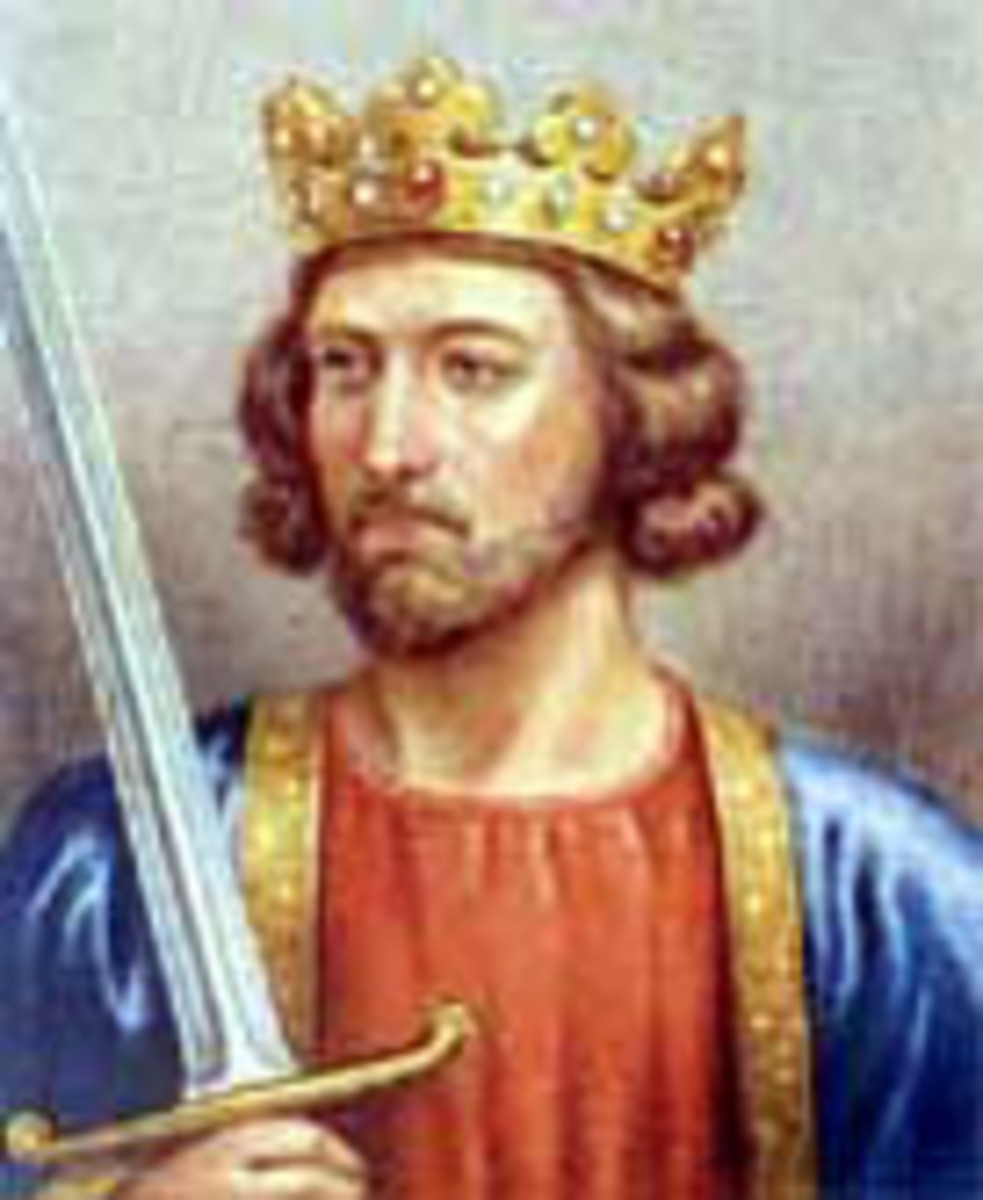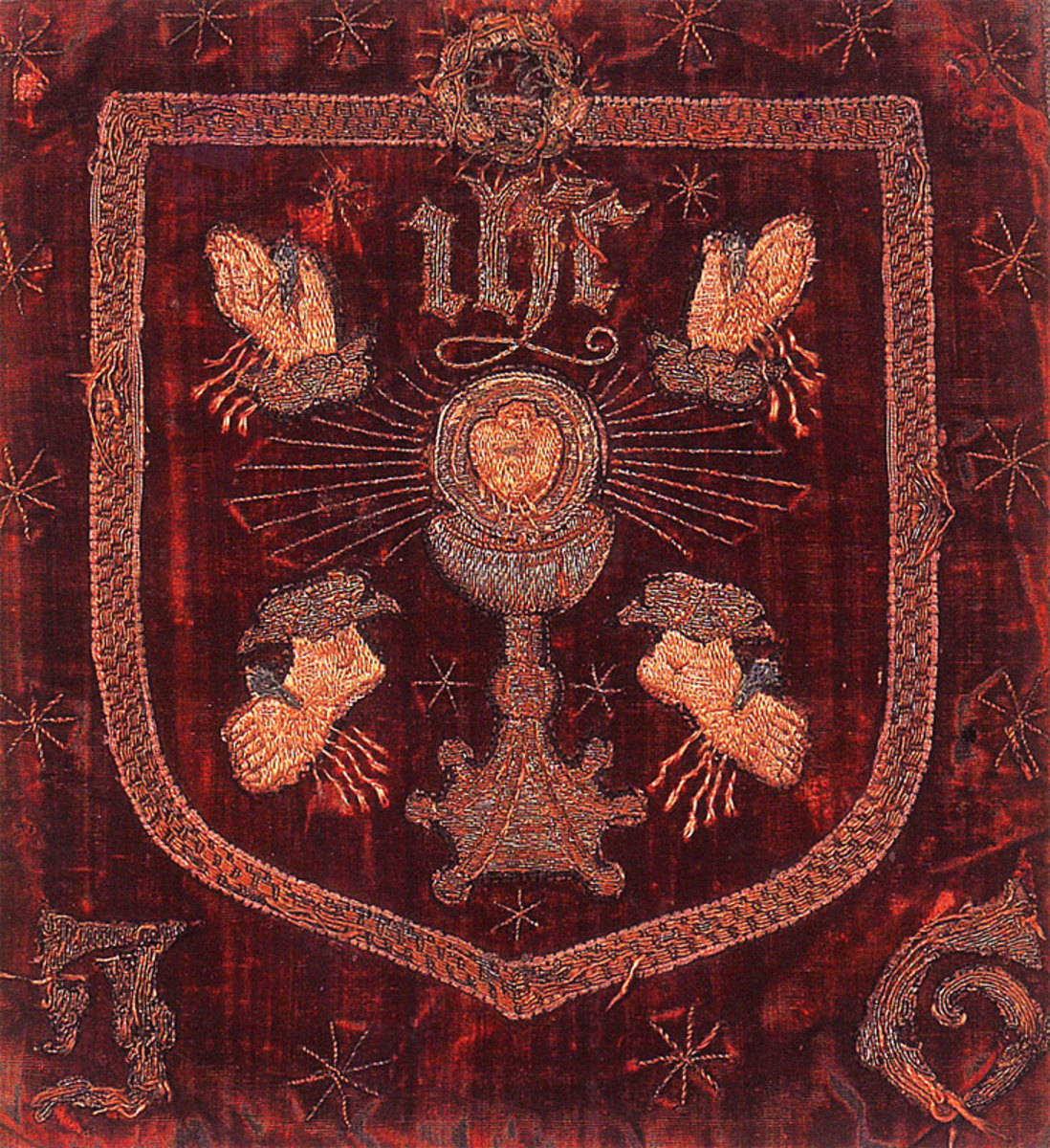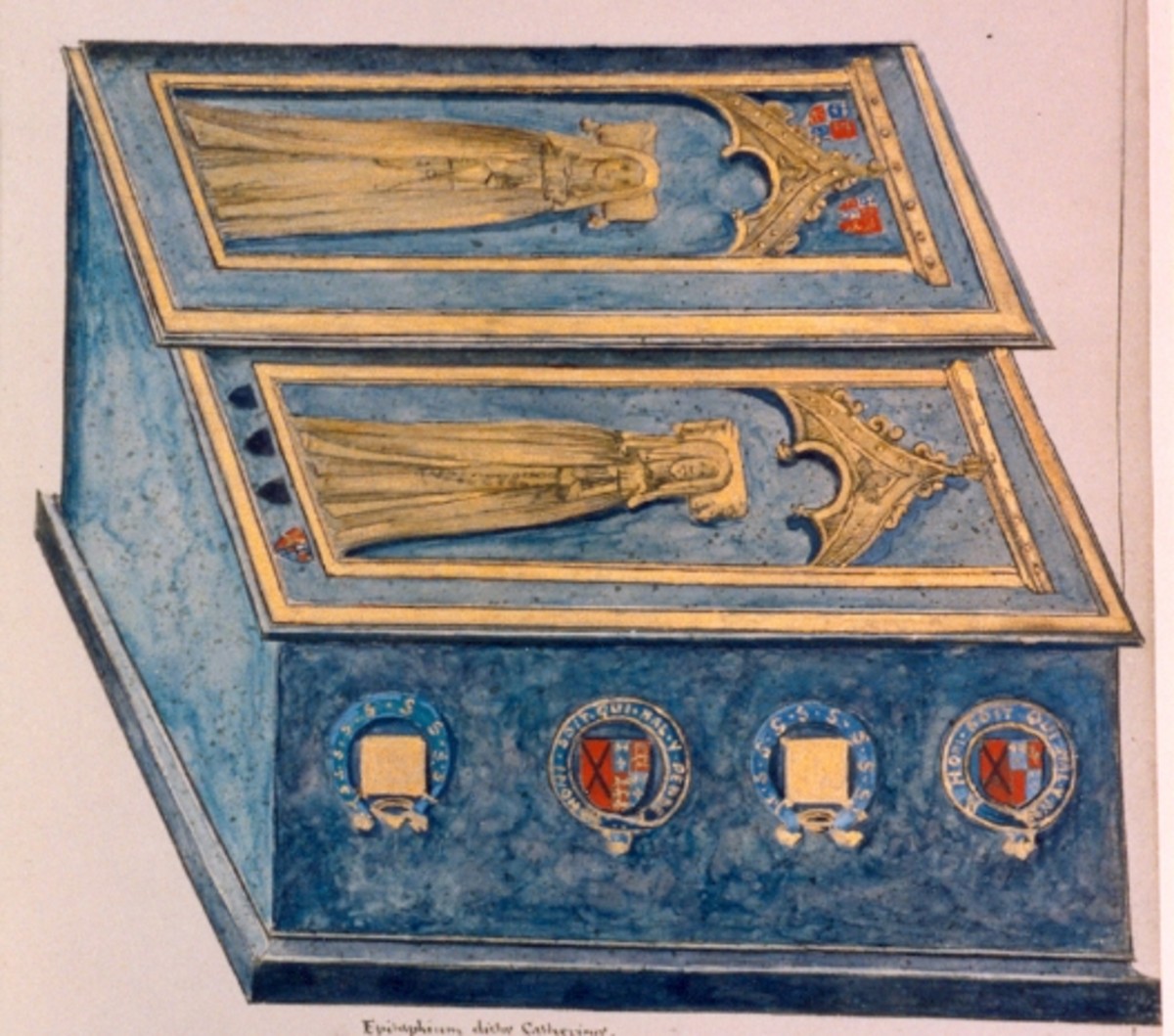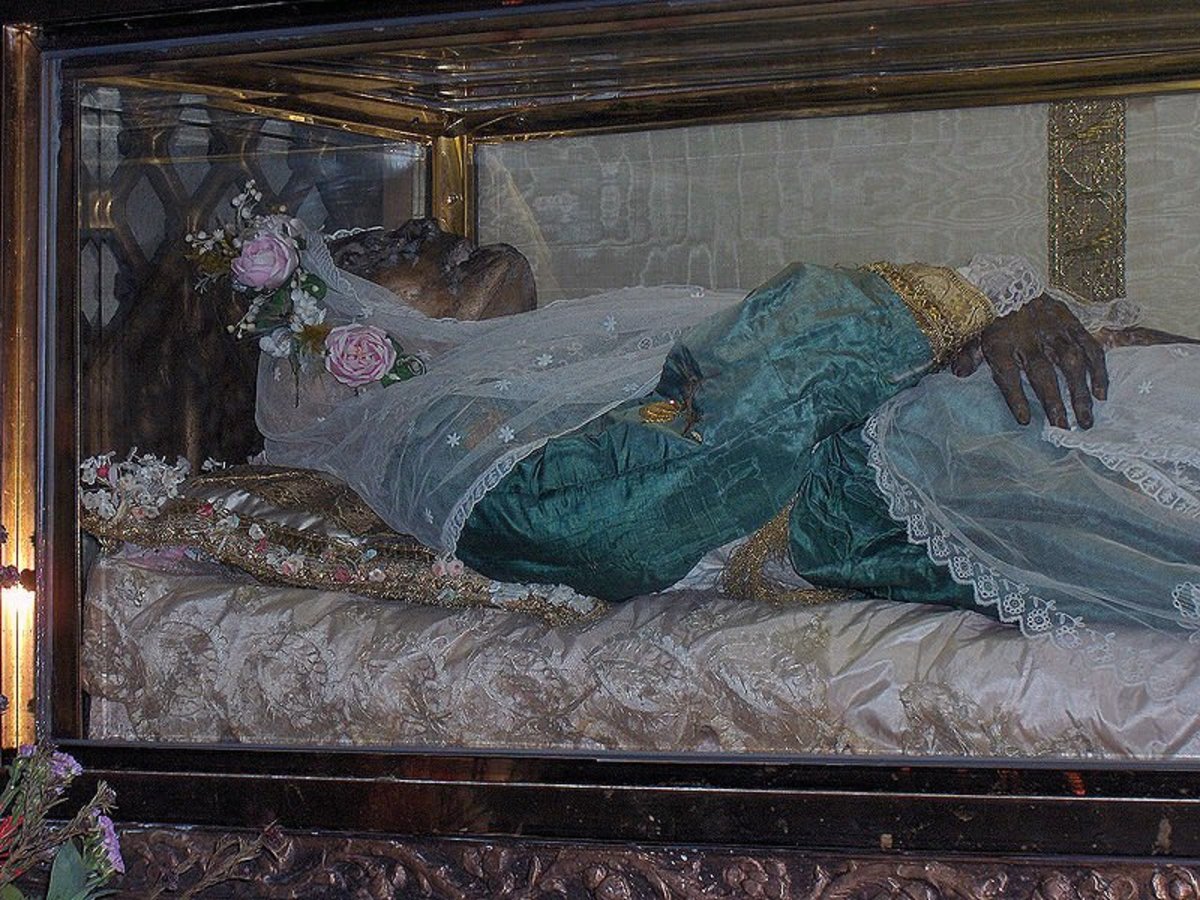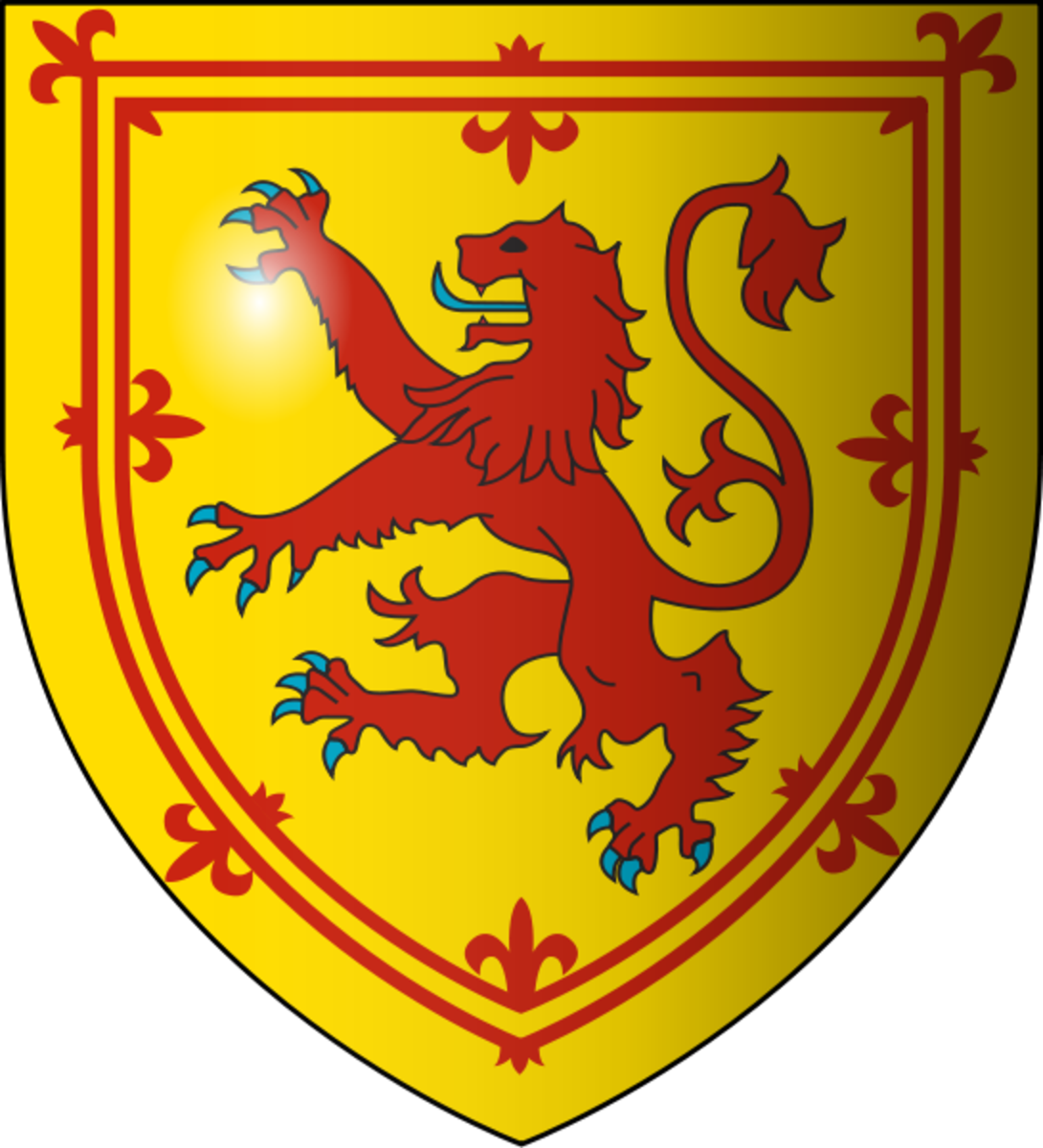Anne of Cleves
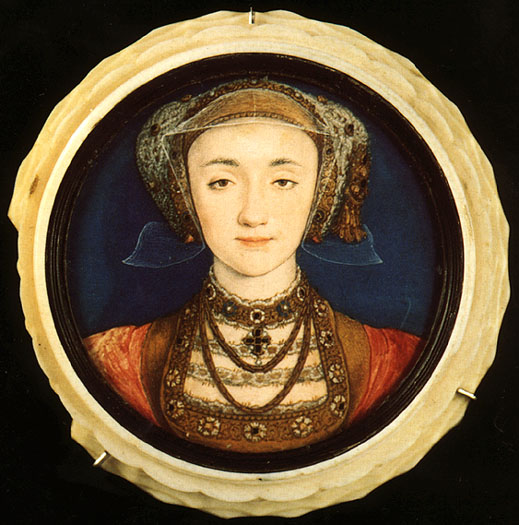

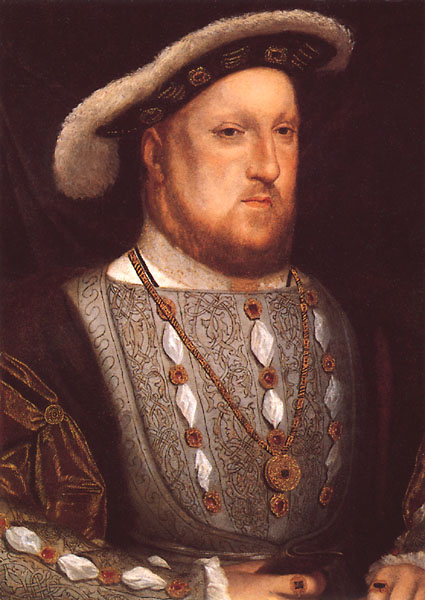
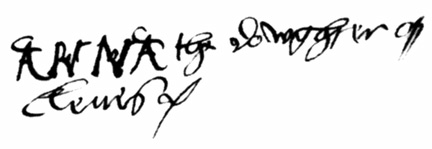
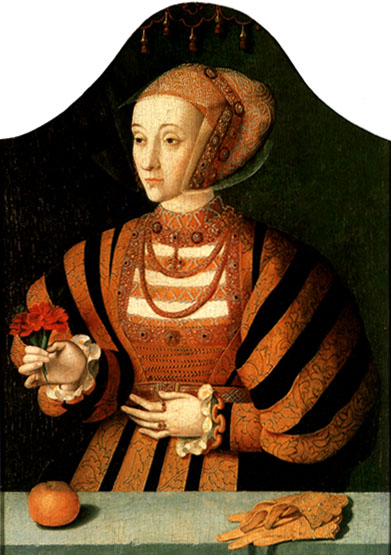
The Fourth Wife
Anne, daughter of John III, Duke of Cleves, and Mary of Julich-Berg-Rarensberg, was born on the 22nd of September 1515 in Dusseldorf.
Anne's brother William succeeded to the dukedom in 1539. In the same year, Hans Holbein came from the court of King Henry VIII of England to paint Anne. When Henry saw this miniature, he decided to marry her.
So, what was Anne of Cleves like? She was intelligent and could read as well as write in her own language. However, she did not know English, Latin or any other language. She couldn't sing or play a musical instrument 'for they take it here in Germany for a rebuke and an occasion of lightness that great ladies should be learned or have any knowledge of music'. She could sew, and expertly too - but how did people expect her to get on at the court of Henry VIII? Music was a passion of his, and he composed his own songs. He didn't speak the same language as Anne, and this would provide a barrier for the couple.
At the end of August 1539, the Duke said that his late father had once negotiated a marriage for Anne with another man. There may have been a pre-contract, but no evidence was found, and Anne was free to marry. On the 4th of September the marriage treaty was signed by Duke William, and it was concluded in England a month later.
In early November, Anne of Cleves set out on her journey, arriving at Calais on the 11th of December. She was unable to leave due to the bad weather until the 26th, and they made the crossing, landing at Deal the following morning. Anne was at Rochester on New Year's Eve. The King was eager to meet his mysterious bride and he set out to meet her.
When Henry arrived at the Bishop's Palace to greet Anne of Cleves, he was dressed in disguise as a common man. This was an old game that he had enjoyed playing with Katherine of Aragon and Anne Boleyn. The rules of the game were simple - the lady would know it was the King, but say nothing, and treat him with affection and make merry with him because he was the most handsome man in the room. Of course, Anne had been raised in a strict environment so she knew nothing of this kind of game. Furthermore, she had never seen a portrait of the King, and had no idea what he looked like. When Henry arrived in disguise, Anne did not know who he was and had more interest in the entertainments.
It was a horrible moment for the King and his courtiers. These courtiers had spent years pretending that the balding, fat and middle-aged man before them was still the handsome, athletic youth of thirty years before. The King had deluded himself into seeing himself that way also. In one moment, Anne of Cleves had made him see the harsh reality, and his ego was shattered. He went away, changed into magnificent clothes, and came back. He spent the afternoon with her, speaking through an interpreter. Everyone hoped that the awkward moment had passed; but Henry never forgot it, and he never forgave her for it.
When Henry got back to court, he kept saying, 'I like her not!' He confronted his chancellor, Thomas Cromwell, who had pushed for the marriage, accusing him of having deceived him over Anne of Cleves. Cromwell tried to shift the blame onto others who had actually seen Anne in person. Henry was already desperate to get rid of her, but there appeared to be nothing that could be done. The Emperor Charles V and King Francois I of France had recently joined in an alliance and could go against England. If Henry offended the Duke of Cleves by rejecting his sister he could have been left without any allies.
On the wedding day, Tuesday 6th January 1540, the King's wedding clothes were made of cloth of gold, embroidered with great silver flowers and banded with black fur, a coat of crimson satin, slashed and embroidered with diamonds, and a collar of gold around his neck. Anne wore a gown made of cloth of gold, embroidered with large flowers made of pearls. The gown was in the Dutch fashion - a round skirt and no train.
Henry paused on his way to the chapel and told his nobles that 'if it were not to satisfy the world and my realm, I would not do what I must do this day for any earthly thing.' The King and Anne were married. A wedding banquet and entertainments followed and the pair were eventually put to bed.
When the next morning came, the King was up early. Cromwell asked him, 'How does your Grace like the Queen?' Henry's response was 'Not so pleasant as I trusted to have done.' Cromwell asked why, and the King responded, 'Surely, my lord, I liked her before not well, but now I like her much worse! She is nothing fair, and have very evil smells about her. I took her to be no maid by reason of the looseness of breasts and other tokens, which, when I felt them, strake me so to the heart, that I had neither will nor courage to prove the rest. I can have none appetite for displeasant airs. I have left her as good a maid as I found her.' Cromwell was now terrified. He knew that if things continued as badly, it was he who would pay.
Anne was given a household of staff, most of them from the English court. One of her six maids-in-waiting was a first cousin of Anne Boleyn. Her name was Catherine Howard.
On the 11th of January, Anne attended a tournament held in honour of her marriage, and wore English dress for the first time, with a French hood that everyone agreed suited her. Three days later, Cromwell told the King's Privy Council that the King had not, nor could not, consummate the marriage with Queen Anne, though the King was 'able to do the act with other than with her'. They knew that if there were no heirs from the marriage, then it was useless. Anne, on the other hand, was blissfully ignorant that anything was wrong.
Shortly after the marriage, Queen Anne received a letter from her stepdaughter, Lady Elizabeth. Anne asked the King for permission to bring Elizabeth to court. Henry took the letter from Anne and told Cromwell to reply that Elizabeth '...had a mother so different from this woman that she ought not to wish to see her'.
In March the King told his Privy Council that he was not able to consummate the marriage. He was using the excuse of the possible pre-contract that had been a small obstacle to his marriage months before.
On June 10th, the man who had done so much to promote the marriage, Thomas Cromwell, was arrested. He was taken to the Tower, and all his enemies rejoiced at his downfall. The 24th of that month saw Queen Anne transferred to Richmond Palace; the excuse was that there was the plague in London. However, as the French ambassador Charles de Marillac said, if it were true, the King would have left the City as 'he is the most timid person that could be in such cases'.
The lords petitioned the King to have the legality of his marriage investigated on the 6th of July. That afternoon the Privy Council asked Queen Anne for her permission to investigate. The following day, Henry made a written declaration to be laid before the clergy.
On the 9th of July 1540, the marriage was declared void on two grounds - that of the pre-contract and the non-consummation of the marriage. Two days later, Anne wrote her acceptance of the end to the King, signing it 'Anne, the daughter of Cleves'. The marriage was formally annulled on the 12th.
Thus ended the King's fourth marriage.
Lady Anne of Cleves delighted everyone with her acceptance of her annulled marriage. She was no Katherine of Aragon who martyred herself; she was no Anne Boleyn who lost her temper. The King was so pleased with Anne's acceptance that the day after the marriage was formally annulled, he sent her gifts.
Now that she was no longer Queen, Anne would be called the King's sister. She would have precedence over every lady in the land, bar whoever succeeded her as Queen, and the King's daughters. Anne was given lands - Bletchingly, Hever Castle (once the property of Anne Boleyn's family) and Richmond Palace, which had been the favourite residence of King Henry VII. Anne was high enough in the King's favour that she was allowed to have Lady Elizabeth visit her. She had it all for as long as she remained in England.
Anne would live for a little time in obscurity. In the same month her marriage to the King ended, he married his fifth wife, this time the girl who had once been her maid-in-waiting, Catherine Howard. On the very same day the King married, he had the promoter of the Cleves marriage, Thomas Cromwell, executed.
However, any clouds that had hovered over Anne during the early days after her annulment were over by New Year 1541. She visited Hampton Court on the 3rd of January, bringing with her two horses with trappings of velvet for the King and Queen. Everyone watched to see how the former Queen would treat her successor. They would have been greatly surprised. Lady Anne and Queen Catherine got on extremely well, and even danced together.
It was noted that Anne, who had adopted English dress by this time, looked far better than she did as Queen; perhaps because the stress of being the King's wife was lifted. She was merry, and enjoyed English food. She became famous for hosting wonderful dinners.
When Catherine Howard's reign as Queen was terminated in 1542, and the King remarried again the following year, this time to Katharine Parr, Anne was said to have remarked that it was 'a fine burden Madam Katharine has taken upon herself!'
In 1547 King Henry VIII was dead. By the end of the following year, Katharine Parr was dead as well. Anne was present during the reign of Edward VI, and at the coronation of Mary I.
Her health fell into decline, and after an unnamed illness, the last surviving wife of King Henry VIII died on the 16th of July 1557. She was buried at Westminster Abbey the following month, where she has lain ever since.
